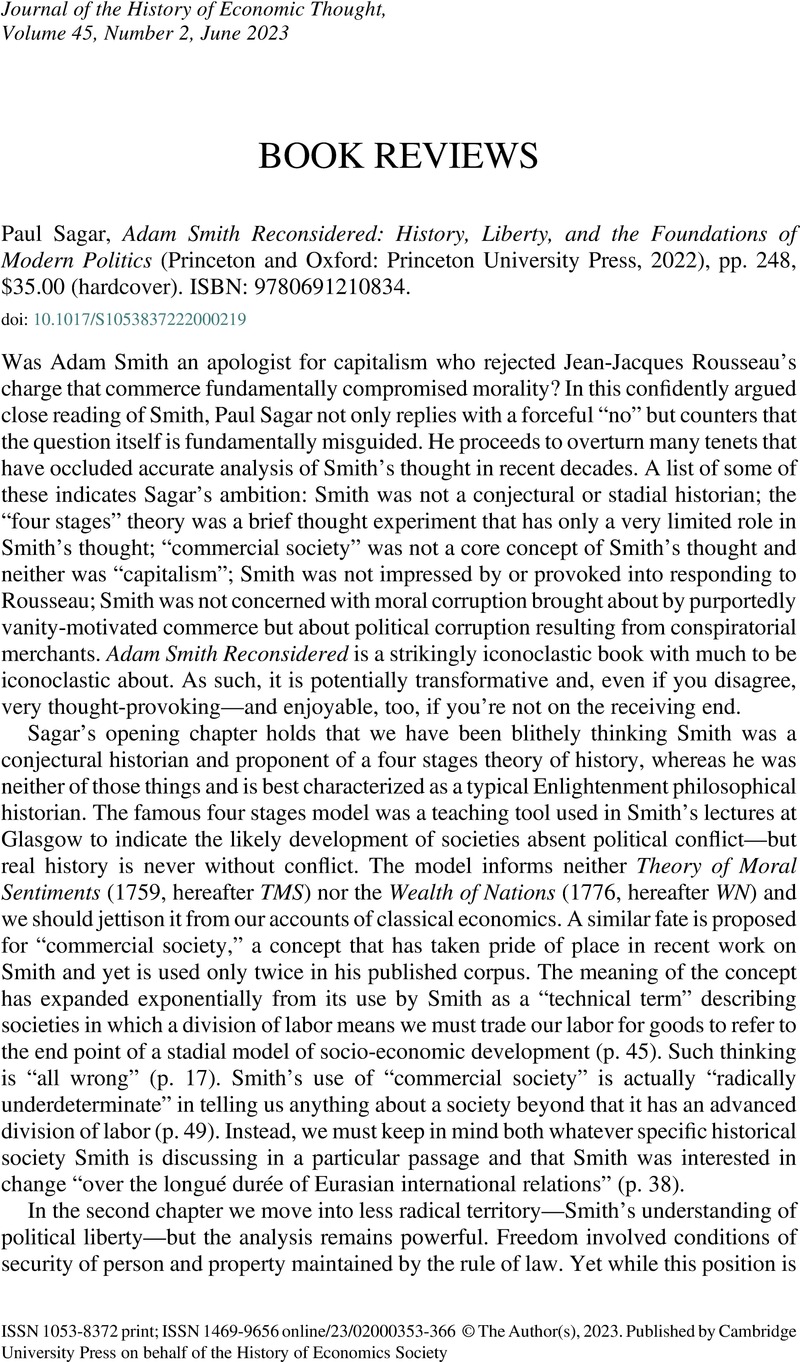No CrossRef data available.
Article contents
Paul Sagar, Adam Smith Reconsidered: History, Liberty, and the Foundations of Modern Politics (Princeton and Oxford: Princeton University Press, 2022), pp. 248, $35.00 (hardcover). ISBN: 9780691210834.
Review products
Paul Sagar, Adam Smith Reconsidered: History, Liberty, and the Foundations of Modern Politics (Princeton and Oxford: Princeton University Press, 2022), pp. 248, $35.00 (hardcover). ISBN: 9780691210834.
Published online by Cambridge University Press: 08 June 2023
Abstract
An abstract is not available for this content so a preview has been provided. Please use the Get access link above for information on how to access this content.

- Type
- Book Review
- Information
- Copyright
- © The Author(s), 2023. Published by Cambridge University Press on behalf of the History of Economics Society


